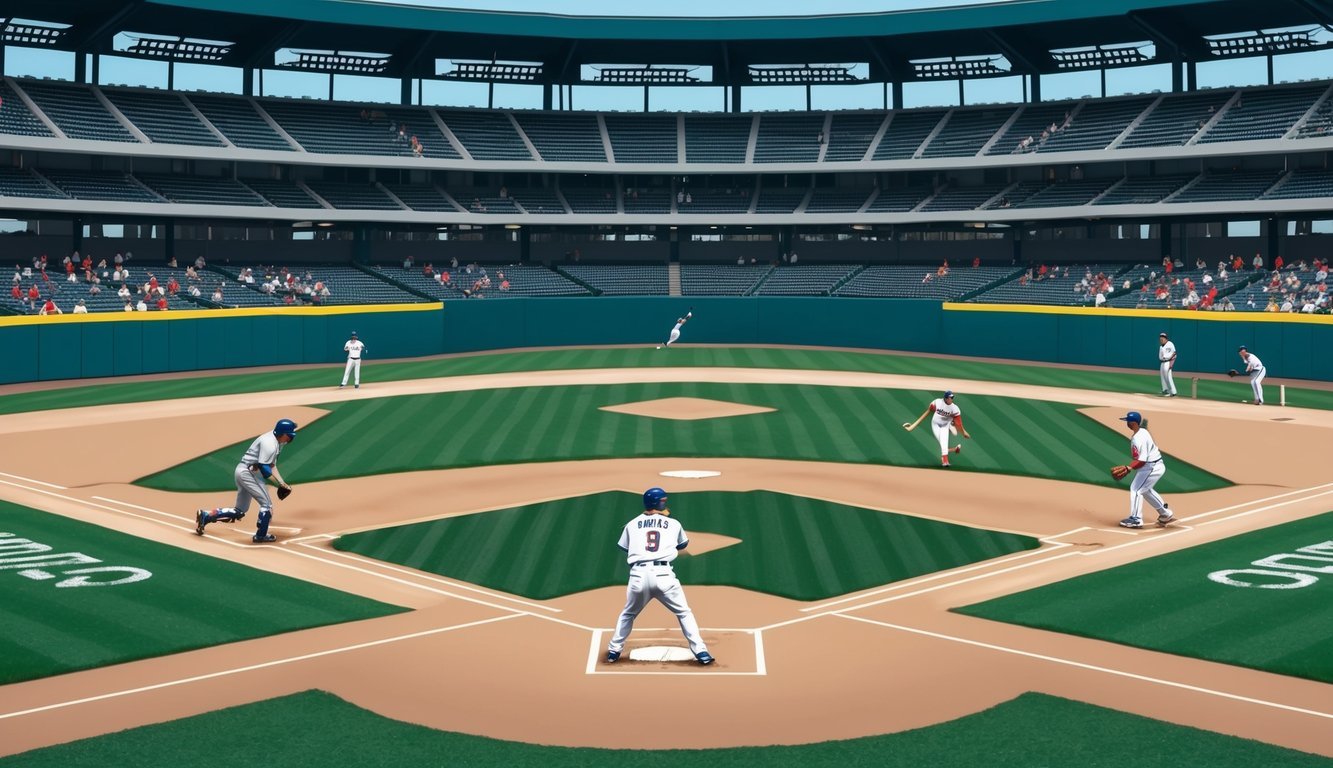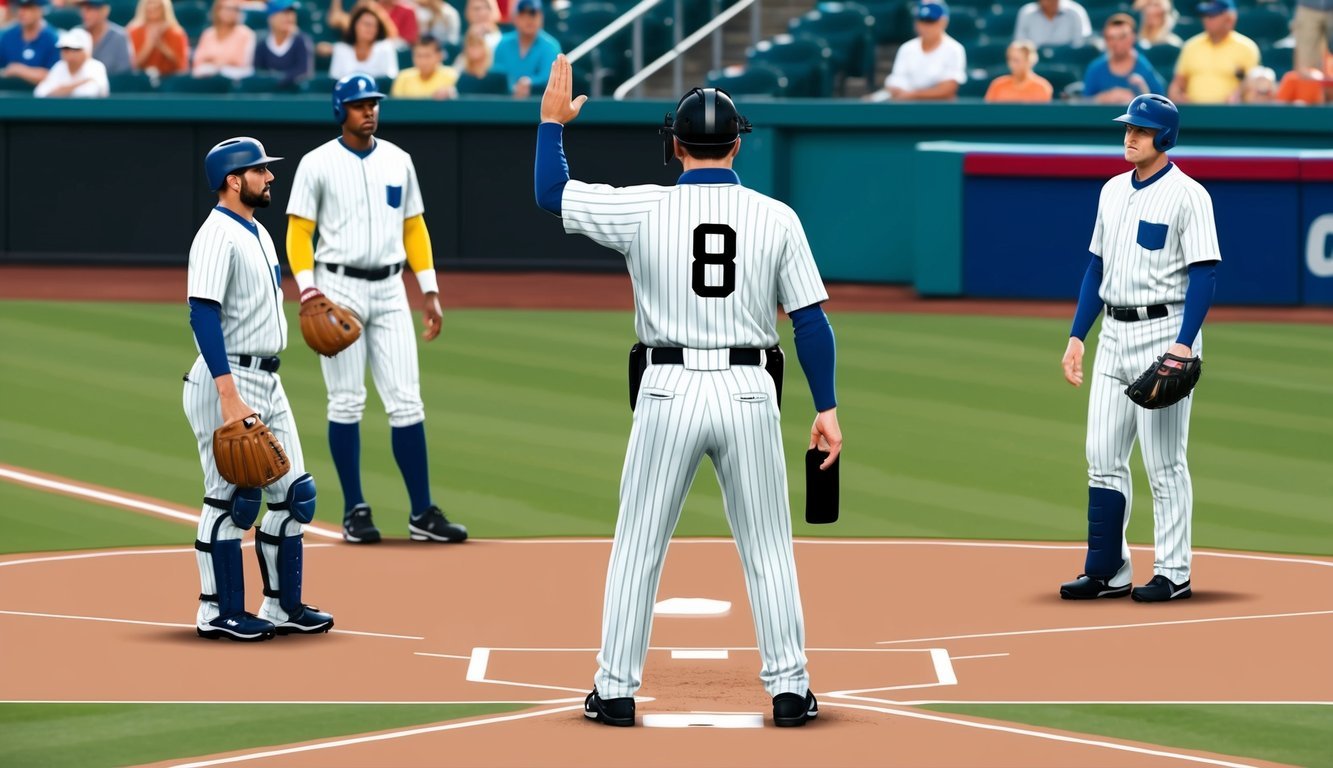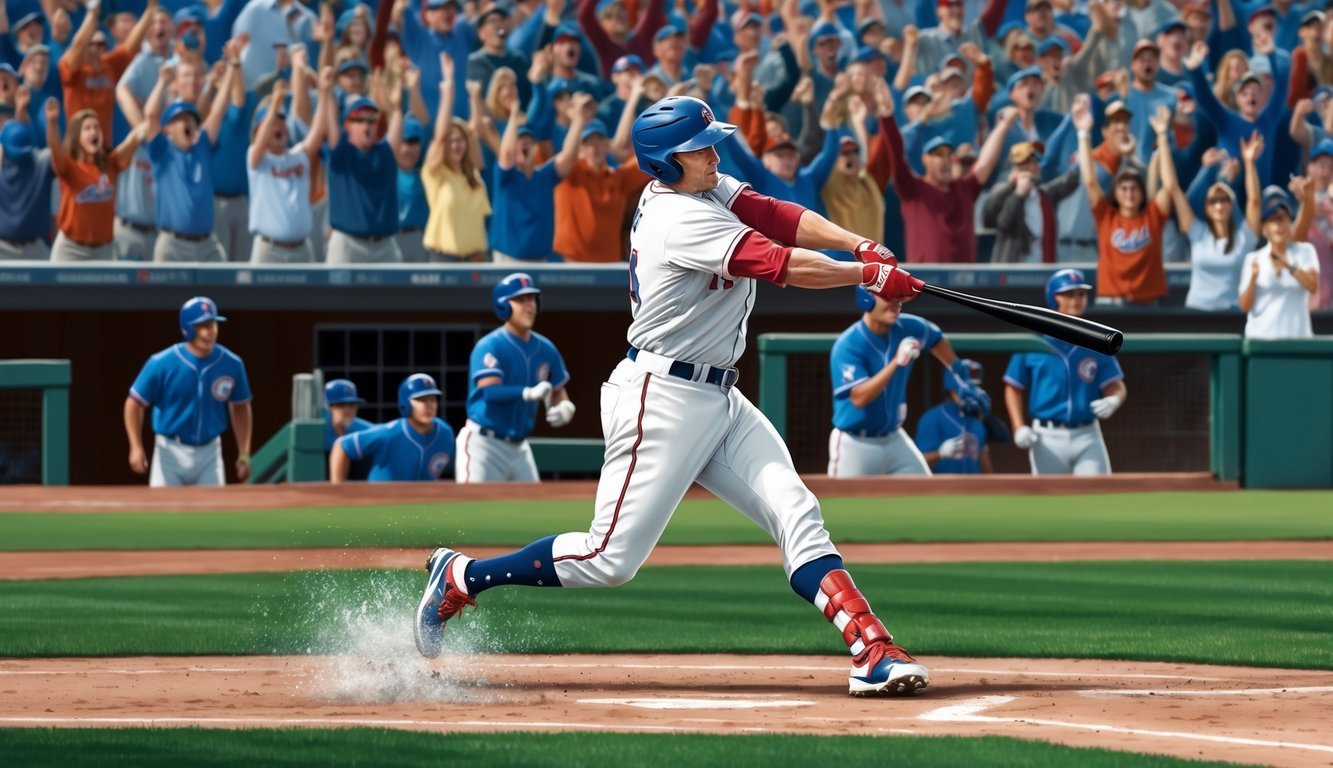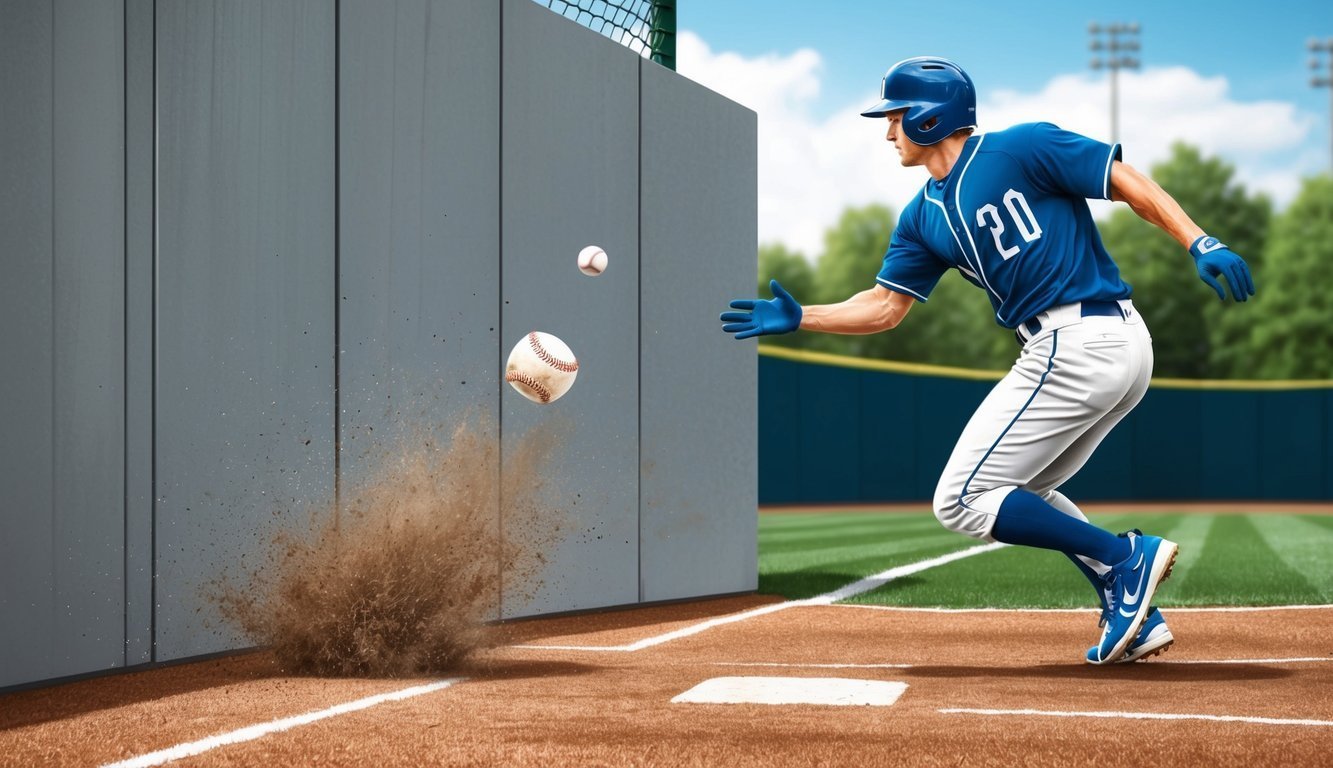Baseball fans know the thrill of watching a well-hit ball soar over the outfield.
Sometimes, that hit takes an unexpected bounce, leading to one of the game’s unique scenarios – the ground rule double.
A ground rule double occurs when a fair ball bounces over the outfield wall or becomes unplayable due to specific ballpark conditions, automatically awarding the batter and all baserunners two bases. This ruling adds an element of excitement and strategy to the game, as players and fans alike watch to see if a hit will clear the fence or take that crucial bounce.
The ground rule double showcases how baseball’s rules can adapt to different playing environments.
From ivy-covered walls at Wrigley Field to oddly angled fences in other parks, each stadium’s unique features can influence when and how this rule comes into play.
Umpires must stay alert, ready to make the call that can change the course of an inning or even the entire game.
Basics of a Ground Rule Double
A ground rule double is a unique play in baseball that awards two bases to the batter and all runners on base.
It occurs when a batted ball becomes unplayable due to specific field conditions.
What Constitutes a Ground Rule Double
A ground rule double happens when a fair ball bounces out of play.
This can occur in several ways:
- The ball bounces over an outfield fence
- It gets stuck in ivy on the outfield wall
- The ball rolls under a fence or scoreboard
Each ballpark may have its own specific ground rules that define these situations.
Umpires make the call when a ground rule double occurs.
The key is that the ball must first land in fair territory before leaving the field of play.
If it goes directly over the fence on the fly, it’s considered a home run instead.
Comparison With Home Runs and Regular Doubles
Ground rule doubles differ from home runs and regular doubles in important ways:
| Ground Rule Double | Home Run | Regular Double |
|---|---|---|
| Ball bounces out of play | Ball clears fence on fly | Ball stays in play |
| Two bases awarded | All bases awarded | Runner determines bases |
| Runners advance two bases | All runners score | Runners may score |
Unlike a home run, a ground rule double doesn’t allow all runners to score automatically.
It’s more restricted than a regular double, where fast runners might score from first base on a deep hit.
The automatic nature of a ground rule double can sometimes benefit the defense.
It prevents extra bases that might have been taken if the ball had stayed in play.
Impact on the Game
Ground rule doubles can significantly alter the course of a baseball game.
They affect scoring opportunities and influence strategic decisions made by players and managers.
How Ground Rule Doubles Affect Scoring
Ground rule doubles often result in runs scored when baserunners are on first or second base.
The batter-runner automatically advances to second, while other runners move up two bases from their position at the time of the pitch.
If a runner is on first, they’ll end up on third base.
A runner on second will score.
This can lead to unexpected scoring opportunities, especially if the hit might have been caught otherwise.
In some cases, ground rule doubles can actually prevent runs.
If a runner on first base could have scored on a regular double, the automatic placement at third limits the offense to one less run.
Strategic Considerations for Players
Batters may aim for areas of the field where ground rule doubles are more likely to occur.
This strategy can be particularly effective with runners on base, potentially forcing in runs.
Outfielders must be aware of stadium features that could lead to ground rule doubles.
They might position themselves to prevent balls from bouncing out of play.
Managers may adjust their defensive alignments based on the likelihood of ground rule doubles in certain parts of the field.
This could involve shifting outfielders or infielders to cover vulnerable areas.
Baserunners need to stay alert, as ground rule doubles can unexpectedly change their advancement.
Being ready to take the extra base can make a crucial difference in close games.
Stadiums and Ground Rules

Baseball stadiums have unique features that impact gameplay.
These quirks lead to specific ground rules tailored to each ballpark, creating exciting and sometimes unexpected situations.
Variations Across Different Ballparks
Wrigley Field, home of the Chicago Cubs, has ivy-covered outfield walls.
Balls lost in the vines result in a ground rule double.
Players must raise their hands to signal a lost ball.
Fenway Park boasts the famous Green Monster.
A ball hitting the ladder on top and going out of play awards the batter a ground rule double.
Tropicana Field, where the Tampa Bay Rays play, has catwalks above the field.
Different rules apply depending on which catwalk a ball hits.
Some parks have unique ground rules for balls lodged in padding or stuck in chain-link fences.
These situations often result in a double.
Famous Examples of Ground Rules
The Houston Astros’ former home, the Astrodome, had a rule for balls hitting overhead speakers.
If a ball struck a speaker in fair territory, it was in play.
At Minute Maid Park, balls hitting the left-field foul pole above the yellow line are home runs.
Below the line, they’re ground rule doubles.
The Tampa Bay Rays have intricate rules for their catwalks.
Balls hitting the two highest catwalks in fair territory are home runs.
Lower catwalks have different outcomes based on where the ball lands.
Boston’s Green Monster has spawned many ground rules.
Balls lodged in the scoreboard are doubles.
Balls bouncing into the stands are also doubles.
Umpire’s Role and Rulings

Umpires play a crucial role in determining ground rule doubles.
They must be vigilant and knowledgeable about each ballpark’s specific ground rules to make accurate calls.
Making the Call on Ground Rule Doubles
Umpires carefully watch fair balls that become unplayable.
When a ball bounces into the stands or gets stuck in ivy-covered walls, the umpire signals a ground rule double.
They raise both hands above their head, showing two fingers.
This ruling awards the batter and all baserunners two bases from the time of the pitch.
Umpires must be quick and decisive, as these calls can significantly impact the game’s outcome.
Discretion and Universal Ground Rules
While MLB has universal ground rules, umpires sometimes use discretion.
Each ballpark has unique features that may require special consideration.
For example, catwalks at Tropicana Field have specific rules.
Umpires must know both league-wide and ballpark-specific rules.
In rare cases, they might confer to ensure the correct call.
This knowledge helps maintain fair play across different stadiums in both the American and National Leagues.
History and Memorable Moments

Ground rule doubles have been part of baseball’s rich tapestry since the early days of the sport.
These unique plays have led to exciting moments and occasionally altered the course of important games.
Notable Ground Rule Doubles in MLB History
In the 1968 World Series, a crucial ground rule double played a pivotal role.
Detroit Tigers’ Jim Northrup hit a ball that bounced over the center field fence at Busch Stadium, driving in two runs.
This hit helped secure the Tigers’ victory in Game 7 against the St. Louis Cardinals.
Another memorable moment occurred in 2013 when Boston Red Sox player Dustin Pedroia hit a ground rule double in Game 6 of the ALCS.
The ball became lodged under the outfield wall padding, preventing a potential inside-the-park home run.
Record-Breaking Doubles and Unusual Plays
Quirky ground rule doubles have been seen in MLB.
In 1986, Minnesota Twins player Gary Gaetti hit a ball that stuck in a speaker hanging from the Metrodome’s roof.
The umpires ruled it a ground rule double, much to the opposing team’s frustration.
A rare occurrence happened in 2019 when Houston Astros’ Michael Brantley hit a ball that lodged in Minute Maid Park’s left field wall.
The ball disappeared into a small gap, stumping players and umpires alike before being declared a ground rule double.
These plays highlight how field conditions and specific ballpark features can influence the game.
They add an element of unpredictability to America’s favorite pastime.
